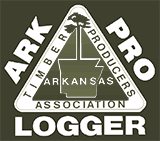As you are aware, the House Ways & Means Committee released the legislative text of tax reform legislation H.R. 1, the Tax Cuts and Jobs Act. The document is 429 pages and we are looking at this information and the analysis provided by our partnering national associations including the Forest Resources Association and the American Loggers Council, the staff of which are still evaluating many of its provisions. Below is a quick analysis of a few of our industry’s priority items:
1) Estate Tax
While H.R. 1 does not eliminate the estate tax immediately, the bill doubles the basic exclusion from the current $5 million level to $10 million, which is indexed for inflation. This provision would apply to tax years beginning after 2017. Furthermore, beginning after 2023, the estate and generation-skipping taxes are repealed while maintaining a beneficiary’s stepped-up basis in estate property. The gift tax is lowered to a top rate of 35 percent and retains a basic exclusion amount of $10 million and an annual exclusion of $14,000 (as of 2017), also indexed for inflation.
2) Tax Incentives for Timber
The proposal leaves existing incentives untouched in the tax code to encourage forest landowners to keep their forested stands in timber production. This is great news as there have been ongoing concerns that these incentives would be targeted for elimination to help pay for proposed corporate tax and other reductions outlined in H.R. 1.
For more details on the Timber Tax provisions: https://nafoalliance.org/issues/tax/
3) Corporate Tax Rate
H.R. 1 would set the corporate tax rate at 20 percent beginning in 2018. Personal service corporations would be subject to a flat 25 percent corporate tax rate. The provision would be effective for tax years beginning after 2017.
4) S Corp and Pass-Through Tax Treatment
H.R. 1 allows a portion of net income distributed by a pass-through entity to an owner or shareholder to be treated as “business income” subject to a maximum rate of 25 percent, instead of ordinary individual income tax rates. The remaining portion of net business income would be treated as compensation and continue to be subject to ordinary individual income tax rates.
5) Business Equipment Expensing
H.R. 1 allows for immediate expensing of 100 percent of the cost of qualified property acquired and placed in service after September 27, 2017 and before January 1, 2023.
PROCESS
The House Ways & Means Committee has scheduled a markup for Monday, November 6 on this proposal and leadership hopes to pass it through the House by Thanksgiving. In the Senate, the Senate Finance Committee is looking to unveil its version of tax reform legislation in the next week to 10 days.
A number of influential business groups in town are opposing the bill in its current form. These groups include the National Association of Homebuilders, National Association of Realtors and the National Federation of Independent Businesses. Although leadership has tax reform on a fast track process, yesterday’s release of legislative text marks the beginning of what promises to be arduous and intense negotiations to fashion a final tax reform package. FRA will be at the table every step of the way and will keep you apprised of progress.
Other Notable Provisions:
Section 179
Under the provision, the small business expensing limitation under section 179 would be increased to $5 million and the phase-out amount would be increased to $20 million. The provision would modify the expensing limitation by indexing both the $5 million and $20 million limits for inflation. Increases in dollar limitations would be effective for tax years beginning after 2017 through tax years beginning before 2023. The new language would also modify the definition of section 179 property to include qualified energy efficient heating and air-conditioning property permanently. The provision to modify the definition of section 179 property to include qualified energy efficient heating and air-conditioning property would be effective for property acquired and placed in service after November 2, 2017.
Alternative Minimum Tax
AMT would be repealed under the bill. If a taxpayer has AMT credit carryforwards, the taxpayer would be able to claim a refund of 50 percent of the remaining credits (to the extent the credits exceed regular tax for the year) in tax years beginning in 2019, 2020, and 2021. Taxpayers would be able to claim a refund of all remaining credits in the tax year beginning in 2022. The provision would be effective for tax years beginning after 2017.
Net Operating Loss (NOL)
Under the proposal, NOL “carrybacks,” which are currently allowed for up to two years, would be largely eliminated. NOL carryforwards are allowed after 2017 with an interest factor to preserve their value. This adjustment in the NOL area would increase revenues to the Treasury by almost $160 billion over ten years.
